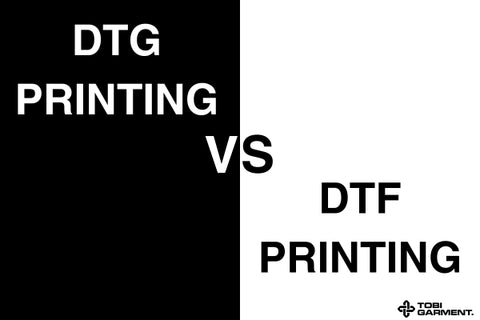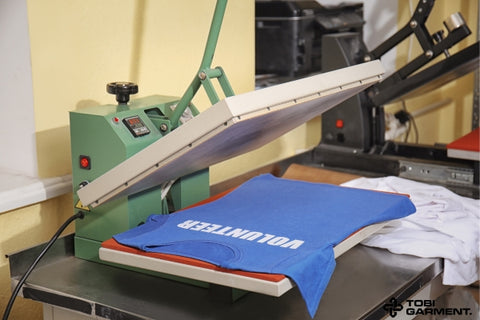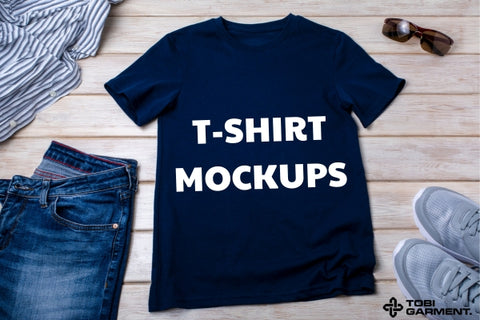
Direct-to-Garment (DTG) and Direct-to-Film (DTF) printing are two cutting-edge technologies transforming garment decoration. Each method has its own advantages depending on your needs. In this guide, we’ll explore both DTG and DTF to help you decide which is best for your business.
Understanding DTF and DTF Printing
What is DTF Printing?
DTF printing is a process where designs are printed onto a special transfer film using a DTF printer. The printed film is then coated with a heat-activated adhesive and cut to the desired shape. Finally, the transfer is heat-pressed onto the garment, creating a vibrant and durable print.
What is DTG Printing?
Direct-to-Garment (DTG) printing is a digital printing method that uses specialized inkjet technology to print directly onto garments. The ink is absorbed into the fabric, creating a soft, flexible print that feels like a part of the garment.
Read more: Water-Based Screen Printing: A Sustainable and Versatile Art
Key Differences Between DTF and DTG Printing
Printing Process
DTF printing involves a multi-step process, including printing the design onto a transfer film, coating it with adhesive, cutting the transfer, and heat-pressing it onto the garment. DTG printing, on the other hand, is a direct printing method where the design is printed directly onto the garment using specialized inks.
Substrate Compatibility
DTF printing is highly versatile, as it can be used on a wide range of fabrics, including cotton, polyester, blends, and more. DTG printing, while offering excellent results on cotton and some blends, may not be as effective on certain fabrics.
Print Quality
Both DTF and DTG printing offer vibrant colors and intricate details. However, DTF prints are known for their exceptional durability and flexibility, with the potential to last the entire lifespan of the garment. DTG prints, while soft and natural to the touch, may start to deteriorate after multiple washes.
Cost and Production Time
DTF printing is generally more cost-effective and efficient for bulk orders, as the pre-printed transfers can be stored and applied as needed. DTG printing, while ideal for on-demand orders, may be slower for small to medium-sized batches due to the pre-treating and curing process.
Read more: Start Screen Printing T-Shirts at Home: A Simple Guide
Durability
DTF prints are renowned for their exceptional durability and flexibility. When properly cared for and washed, DTF prints can withstand the test of time, maintaining their vibrant colors and sharp details. DTG prints, while offering a soft hand feel, may not be as durable as their DTF counterparts.
Choosing the Right Method for Your Needs
Factors to Consider
When deciding between DTF and DTG printing, consider factors such as the type of fabrics you work with, the size of your orders, your budget, and the desired print quality and durability. It's also essential to factor in the learning curve and setup requirements for each method.
When to Choose DTF
Choose DTF printing if you work with a wide range of fabrics, require exceptional durability, and need to produce bulk orders efficiently. DTF is also a great choice if you want to minimize the learning curve and setup time.
When to Choose DTG
Choose DTG printing if you primarily work with cotton and cotton blends, prefer a soft hand feel, and need to produce on-demand orders. DTG is also a good option if you have a limited budget and want to start small.
Read more: Best Types of T-Shirt for Screen Printing: What You Need to Know
Future Trends in DTF and DTG Printing
Technological Advancements
Both DTF and DTG printing technologies are constantly evolving, with manufacturers introducing faster, more efficient, and versatile machines. Expect to see advancements in print speed, substrate compatibility, and automated processes in the coming years.
Market Growth
The DTF printing market is experiencing rapid expansion, with the global market expected to reach $14 billion by 2027. This growth is driven by the increasing demand for customized and personalized garments, as well as the cost-effectiveness and efficiency of DTF printing.
Emerging Applications
As DTF and DTG printing technologies continue to evolve, we can expect to see new and exciting applications emerge. From printing on uneven surfaces like hats and shoes to creating unique designs on a variety of fabrics, the possibilities are endless.
Read more: Screen Printing Hoodies: A Step-by-Step Tutorial for DIY Enthusiasts
Conclusion
In the battle of DTF vs DTG printing, there is no clear winner, as each method offers its own unique advantages. The key is to choose the right printing technology that aligns with your business goals, budget, and target market. By understanding the differences between DTF and DTG printing, you'll be well on your way to making an informed decision and taking your garment decoration business to new heights.
FAQ
1. What is the difference between DTF and DTG printing?
DTF printing involves printing designs onto a transfer film, coating it with adhesive, cutting the transfer, and heat-pressing it onto the garment. DTG printing directly prints the design onto the garment using specialized inks.
2. Can DTF prints be washed?
Yes, DTF prints are highly durable and can withstand multiple washes when properly cared for. The printed film and adhesive create a strong bond with the fabric, ensuring the print lasts the entire lifespan of the garment.
3. What types of fabrics can be used with DTF printing?
DTF printing is versatile and can be used on a wide range of fabrics, including cotton, polyester, blends, and more. The printed transfer can be applied to any fabric that can withstand heat pressing.
4. Is DTF printing more cost-effective than DTG printing?
DTF printing is generally more cost-effective for bulk orders, as the pre-printed transfers can be stored and applied as needed. DTG printing may be more cost-effective for on-demand orders and small batches.
Read more related posts from Tobi Garment:



